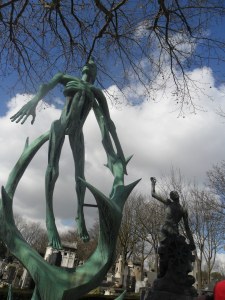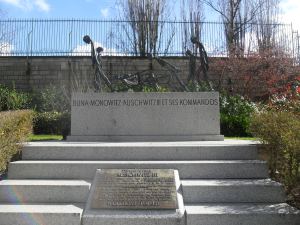I recently took the opportunity provided by my first trip to Paris to read up on an historical event that I’ve been vaguely aware of, and vaguely fascinated by, for some time – the Paris Commune of 1871. It was something that had filtered through to me during my undergraduate studies of political theory, a contentious moment that for some was direct democracy in action, for others the dictatorship of the proletariat made flesh, and for others still an interruption of revolutionary anarchy and terror.
Hoping to avoid history-as-polemic, I bought myself Massacre by John Merriman. I persevered through the clunky prose and the regular digressions into details of individuals only tangentially related to the events, and was riveted by the stark descriptions (recounted over a hundred or so pages) of the bloody retribution enacted by government forces as they crushed the Commune, killing thousands (if not tens of thousands) of Communards in the process.
While I was in Paris I managed to visit two sites that bookmark the existence of the Commune: Montmartre, where the imposing basilica of Sacré-Coeur was constructed in the aftermath of the Commune, overlaying the site of beginning of the insurrection with a gleaming monument to God and moral order; and Père Lachaise Cemetery, one of the last places in eastern Paris to hold out against government forces, where hundreds of Communards were executed in the final two days of ‘Bloody Week’. A simple plaque placed on the cemetery wall in 1908 reads ‘To the dead of the Commune, 21-28 May 1871’.
The details of these killings were shocking, and visiting the sites was poignant, but that is not what has inspired me to write this. I am writing because of one sentence in Merriman’s book, where he quotes the government inquest into the events of the Commune. ‘The government report saluted the repression’, he writes, because ‘“Society is obliged to defend itself”’ (p. 248).
“Society is obliged to defend itself” is, of course, almost the exact formulation that Michel Foucault used to describe the discourses of race war and state racism that developed from the 17th Century in his lecture series “Society Must Be Defended”.
In his 17 March 1976 lecture, Foucault describes racism as ‘a way of introducing a break into the domain of life that is under power’s control: the break between what must live and what must die’. In the biopolitical system ‘killing or the imperative to kill is acceptable only if it results not in a victory over political adversaries, but in the elimination of the biological threat and the improvement of the species or race’ (pp. 254-256).
As Merriman recounts, the destruction of the Commune was presented in similar terms. He notes how Communards were described as savages and barbarians (p. 207), how government newspapers called for ‘vengeance to clean the contagious Communard stain from the city’, and how purging Paris of these degenerates was seen as a necessity if France was to be saved, to be reborn (pp.238-240).
Foucault almost immediately brings in the example of Nazism when detailing his conception of biopolitical racism. ‘After all’, he states, ‘Nazism was in fact the paroxysmal development of the new power mechanisms that had been established since the eighteenth century’ (p. 259). It should therefore have been no surprise to see memorials to the victims of Auschwitz, Buchenwald and Dachau next to the Communard plaque on the Allée du mur des Fédérés in Père Lachaise.
It is also not surprising that something I had always seen through a lens of class war, of repression designed to protect bourgeois privilege, can also be viewed through a prism of racism and biopolitics.
But what is surprising, shocking even, is that this horrendous period of classist-racist bloodletting is not more widely known, and that it is not widely discussed in the same terms as the colonial and totalitarian genocides of the 19th and 20th Centuries.



